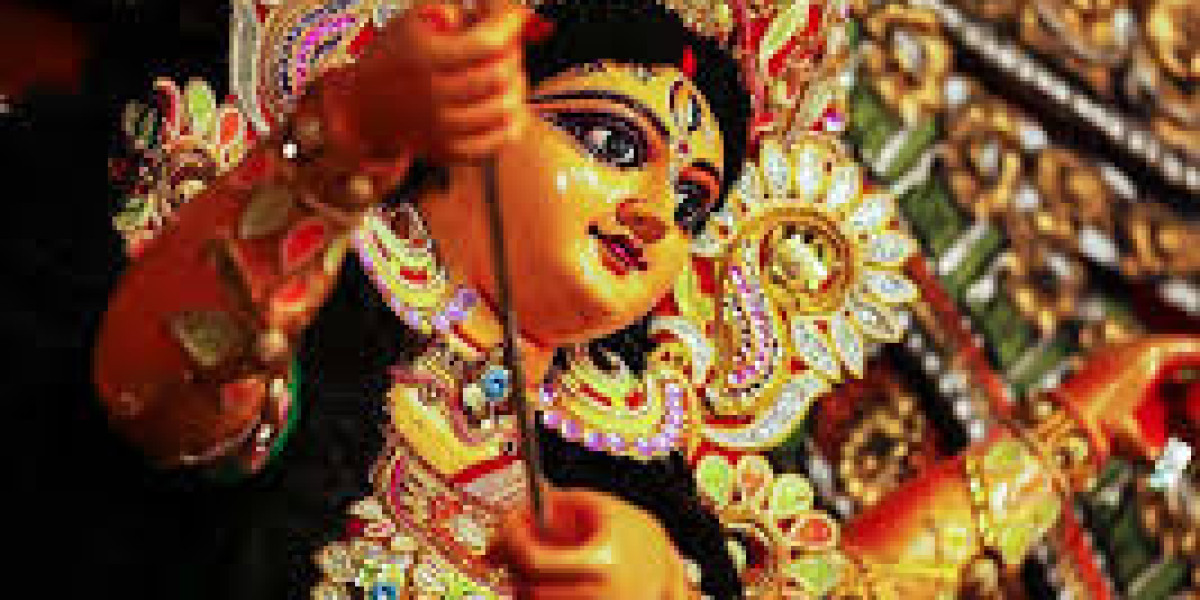Navratri is a festival that celebrates the victory of good over evil and is dedicated to the worship of the nine forms of the Goddess Durga, known collectively as Navdurga. During this auspicious nine-day festival, devotees perform various rituals, observe fasts, and immerse themselves in spiritual practices to seek the blessings of the Goddess. A vital part of the Navratri Puja is the use of specific Samagri (items) that play an integral role in making the worship complete and fulfilling. In this article, we will explore the comprehensive list of navdurga puja samagri , its significance, and how to prepare for a blessed Navratri celebration.
Significance of Navdurga Puja Samagri
Navratri Puja is not just a ritual; it is an expression of devotion and an opportunity to connect with the divine energy of Goddess Durga. Each item used in the Puja has its spiritual significance and purpose. The use of the right Samagri during the Puja ensures that all aspects of the ritual are addressed, creating a harmonious and blessed environment. From invoking the deity to offering gratitude, every part of the ritual requires specific items that are believed to attract positive energy, ward off negativity, and bring prosperity and happiness into one's life.
Essential Navdurga Puja Samagri List
Here is a detailed list of navdurga puja samagri required for a complete Navdurga Puja. This Samagri is used throughout the nine days of Navratri and is crucial for each stage of the worship.
1. Kalash (Pot)
The Kalash is a metal or earthen pot that symbolizes the universe. It is filled with water, and a coconut wrapped in red cloth is placed on top. Mango or betel leaves are also arranged around the mouth of the pot. This Kalash is worshipped during the entire Puja as a representation of the divine mother.
Items Required: Metal or clay pot, water, mango/betel leaves, red cloth, and coconut.
2. Diyas and Lamps
Lighting diyas or lamps signifies the removal of darkness and the presence of divine energy. Ghee lamps or oil diyas are used during the Puja to invoke the blessings of the Goddess.
Items Required: Ghee or oil, cotton wicks, matchbox, earthen or brass lamps.
3. Chunari and Red Cloth
The color red is associated with Goddess Durga, representing power, purity, and strength. During the Puja, a red Chunari (veil) is offered to the idol or picture of the Goddess. Additionally, red cloth is used to wrap the coconut placed on the Kalash.
Items Required: Red Chunari (veil), red cloth.
4. Durga Idol or Picture
A beautifully adorned idol or picture of Goddess Durga is placed on the Puja altar. This serves as the central focus of devotion throughout the nine days.
Items Required: Durga idol or picture.
5. Puja Thali (Plate)
A Puja thali is used to arrange all the Samagri neatly during the worship. The thali should be clean and can be made of brass, silver, or steel.
Items Required: Brass, silver, or steel plate.
6. Incense Sticks and Dhoop
Incense sticks and dhoop (incense cones) are used during the aarti to purify the environment and create a divine atmosphere. The fragrance is believed to please the deities and attract positive energies.
Items Required: Incense sticks, dhoop cones, incense holder.
7. Flowers and Garlands
Fresh flowers, especially marigolds, roses, and jasmine, are used to adorn the idol and the Puja space. Floral garlands are offered to the Goddess as a sign of respect and devotion.
Items Required: Marigold, rose, jasmine, and other fresh flowers, floral garlands.
8. Fruits and Sweets
Offering fruits and sweets symbolizes gratitude for nature's bounty and the fulfillment of desires. Popular sweets such as laddoos, barfi, or halwa are offered to the Goddess, along with various fruits like apples, bananas, and pomegranates.
Items Required: Seasonal fruits, laddoos, barfi, halwa, or other sweets.
9. Panchamrit
Panchamrit is a sacred mixture made of milk, curd, honey, sugar, and ghee. It is used during the Abhishek (ritualistic bathing) of the Goddess and is later distributed as prasad (holy offering) to the devotees.
Items Required: Milk, curd, honey, sugar, and ghee.
10. Kumkum, Haldi, and Sindoor
Kumkum (vermilion), haldi (turmeric), and sindoor (vermilion powder) are essential items used in Hindu worship. They are applied to the deity as a sign of reverence and also mark the foreheads of devotees.
Items Required: Kumkum, haldi, sindoor.
11. Akshat (Rice Grains)
Rice grains coated with turmeric are used in various rituals as a symbol of purity and prosperity. During Navdurga Puja, Akshat is offered to the Goddess while chanting prayers.
Items Required: Rice grains, turmeric.
12. Betel Leaves and Nuts
Betel leaves and nuts are considered sacred and are used in Hindu rituals to show respect and devotion. During Navratri Puja, they are offered to the deity along with other items.
Items Required: Betel leaves, betel nuts.
13. Cloves, Cardamom, and Camphor
These aromatic spices are used during the aarti (ritual of waving light). Cloves and cardamom are often included in the prasad, while camphor is lit to signify the burning of ego and ignorance.
Items Required: Cloves, cardamom, camphor.
14. Gangajal (Holy Water)
Gangajal is considered the purest form of water and is used to purify the Puja space, Samagri, and the idol. Sprinkling Gangajal during the Puja creates an aura of sanctity.
Items Required: Gangajal.
15. Havan Samagri
For those who perform a havan (fire ritual) as part of the Navratri Puja, havan samagri is required. This includes a mixture of herbs, sandalwood powder, ghee, sesame seeds, and other sacred ingredients to offer into the holy fire.
Items Required: Havan samagri mixture, ghee, sandalwood powder, sesame seeds, firewood, havan kund (fire vessel).
Preparing for the Navdurga Puja
Now that you have the list of essential Navdurga Puja Samagri, it's time to prepare for the Puja. Here are a few steps to follow to ensure a smooth and blessed celebration:
Cleanse the Puja Area: Before setting up the Puja space, clean the area thoroughly. Sprinkle Gangajal to purify the space and create a sacred environment.
Arrange the Samagri: Place all the items neatly on a Puja thali. Keep the Kalash in the center of the Puja altar, and adorn it with mango leaves and the wrapped coconut.
Prepare the Idol: Place the idol or picture of Goddess Durga in a prominent position on the Puja altar. Decorate it with flowers, garlands, and the Chunari.
Perform the Rituals: Follow the traditional Navdurga Puja Vidhi, which includes chanting mantras, offering flowers, lighting diyas, and performing aarti.
Distribute Prasad: After the Puja, distribute the prasad, including fruits, sweets, and Panchamrit, to family members and devotees.
Conclusion
Navdurga Puja Samagri holds immense significance in the worship of the Goddess during Navratri. Each item, from the Kalash to the incense sticks, plays a vital role in creating a sacred atmosphere and inviting the divine blessings of Goddess Durga.








